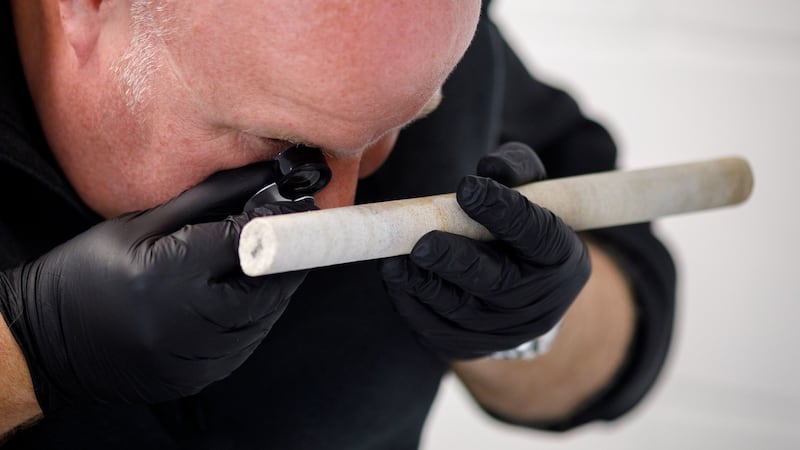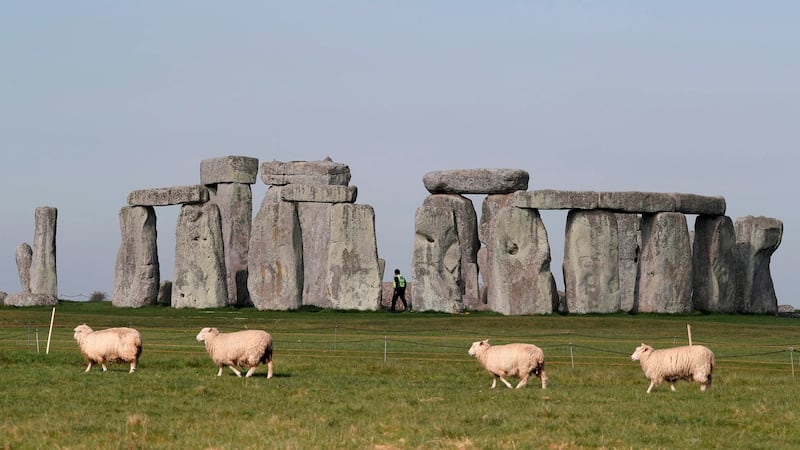Today West Woods in Wiltshire, in southwestern England, is a popular spot for hikers, dog walkers and mountain bikers, famed for its bluebells in the springtime. Stick to the footpaths and it is easy to miss the hefty flat stones hidden in the undergrowth.
But groundbreaking scientific research published on Wednesday reveals that, 4,500 years ago, this spot – and in particular those hulking sandstone boulders – drew the ancient architects of Stonehenge.
The research, made possible after a piece of one of the stones taken away as a souvenir 60 years ago was recovered, concludes that 50 of the 52 sarsen stones at Stonehenge were probably sourced from West Woods, on the edge of modern-day Marlborough.
It proposes possible routes along which Stonehenge’s creators may have transported the sarsens to their resting spot on Salisbury Plain 15 miles (24km) to the south, though how they managed to get them there remains a puzzle. Future research will try to pinpoint the specific sarsen extraction pits in the woods, which could yield more discoveries about the people who built Stonehenge.

David Nash, a professor of physical geography at the University of Brighton, who led the research, said the hairs on the back of his neck stood up when he considered the notion of ancient builders working on the spot and the huge effort it took to source the stones and transport them.
“This was a big, concerted, deliberate act,” he said. “It must have been a real undertaking. That brought home to me the scale and focus that was required.”
Typically weighing 20 tonnes and standing up to seven metres tall, sarsens make up all 15 stones of Stonehenge’s central horseshoe, the uprights and lintels of the outer circle and outlying stones such as the heel stone, the slaughter stone and the station stones.
The monument’s smaller bluestones have been traced to the Preseli Hills in Wales, almost 200 miles (320km) away, but the origin of the sarsens – more homogenous in composition – had until now proved tricky to pin down. Experts had worked on the puzzle for four centuries and concluded they were probably from north Wiltshire but had not found the precise spot.
A breakthrough came after a tube-shaped sample of one of the Stonehenge megaliths taken by a man who worked on a restoration project in 1958 was handed back last year. Nash and his team were allowed to use “destructive” techniques on chips from the sample to create a geochemical “fingerprint” of the monument’s sarsen stones.
They then analysed sarsens from 20 sites across southern England including Mutter’s Moor in Devon and Valley of the Stones in Dorset, comparing their composition with the chemistry of the chips. Nash said they were surprised that stones from West Woods, which in the time of Stonehenge was probably treeless open high ground, turned out to be an exact match.
“We weren’t really setting out to find the source of Stonehenge,” he said. “We picked 20 areas and our goal was to try to eliminate them, to find ones that didn’t match. We didn’t think we’d get a direct match. It was a real ‘Oh my goodness’ moment.”
There are several possible routes that the builders of Stonehenge may have used to move the stones from West Woods. One suggestion favoured by Nash is that they may have moved a few miles west then south through the Vale of Pewsey, possibly passing close to neolithic sites at Marden and Knapp Hill. They may also have gone more directly south and picked up the course of the River Avon. How they did it remains a mystery. Some some speculate that they were moved on sleds or rollers.

Another puzzle is why two of the 52 stones appear not to be from West Woods. One possibility is that they are the work of different builder communities who chose to source their materials from a separate area.
The English Heritage senior properties historian Susan Greaney said she was delighted that one of the most intriguing questions about Stonehenge had been answered.
She said: “To be able to pinpoint the area that Stonehenge’s builders used to source their materials around 2500BC is a real thrill. Now we can start to understand the route they might have travelled and add another piece to the puzzle.”
While it is thought the smaller bluestones were sourced from Pembrokeshire because the builders of Stonehenge had some sort of sacred connection with the landscape there, it may be that the West Woods site was chosen for – relative – convenience.
Greaney said: “When sourcing the sarsens, the overriding objective seems to be size – they wanted the biggest, most substantial stones they could find and it made sense to get them from as nearby as possible.” - Guardian










